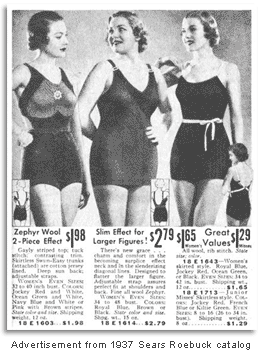In 1886, Richard Sears bought an unwanted shipment of gold watches from a Chicago jewelry shop. The purchase changed the course of his life. The sales that he made from those watches launched a career as a watch retailer. Later, Sears hired watchmaker Alvah C. Roebuck to assist him. After some time working together, they decided to start a company by the name of Sears, Roebuck and Co.
 Sears observed that farmers paid high prices for many of the products they consumed from local merchants. His response was a mail-order catalog with a wide variety of products at clearly stated prices. The first catalog was produced in 1888, putting it in competition with Montgomery Ward's "Wish Book" that had been in circulation since 1883.
The Sears Roebuck catalog grew apace. By 1895, it has passed 500 pages in size and sold almost any consumer product a working-class American family could desire. In later years, it sold automobiles and even kits for buildings, including churches.
In 1895, Julius Rosenwald purchased a half interest in the company and began to improve its management practices. When Richard Sears left the company in 1908 due to health, Rosenwald took over as president, in which capacity he remained until 1924. He remained as chairman until his death in 1932, when he was succeeded by his son, Lessing Rosenwald.
Sears adapted well to the growth of suburbs after World War II and crushed its ancient rival Montgomery Ward. Throughout its history, Sears was noted for creatively adding to its list of consumer offerings, such as the addition of Allstate Insurance, which was sold at their retail stores.
Two decades after the end of the war, Sears completely dominated any listing of America's top retailers, but the seeds of its destruction were being sown by discount stores. Sears tried a variety of responses but was unable to maintain its position, and today is a relatively small factor in American retailing.
Sears observed that farmers paid high prices for many of the products they consumed from local merchants. His response was a mail-order catalog with a wide variety of products at clearly stated prices. The first catalog was produced in 1888, putting it in competition with Montgomery Ward's "Wish Book" that had been in circulation since 1883.
The Sears Roebuck catalog grew apace. By 1895, it has passed 500 pages in size and sold almost any consumer product a working-class American family could desire. In later years, it sold automobiles and even kits for buildings, including churches.
In 1895, Julius Rosenwald purchased a half interest in the company and began to improve its management practices. When Richard Sears left the company in 1908 due to health, Rosenwald took over as president, in which capacity he remained until 1924. He remained as chairman until his death in 1932, when he was succeeded by his son, Lessing Rosenwald.
Sears adapted well to the growth of suburbs after World War II and crushed its ancient rival Montgomery Ward. Throughout its history, Sears was noted for creatively adding to its list of consumer offerings, such as the addition of Allstate Insurance, which was sold at their retail stores.
Two decades after the end of the war, Sears completely dominated any listing of America's top retailers, but the seeds of its destruction were being sown by discount stores. Sears tried a variety of responses but was unable to maintain its position, and today is a relatively small factor in American retailing.